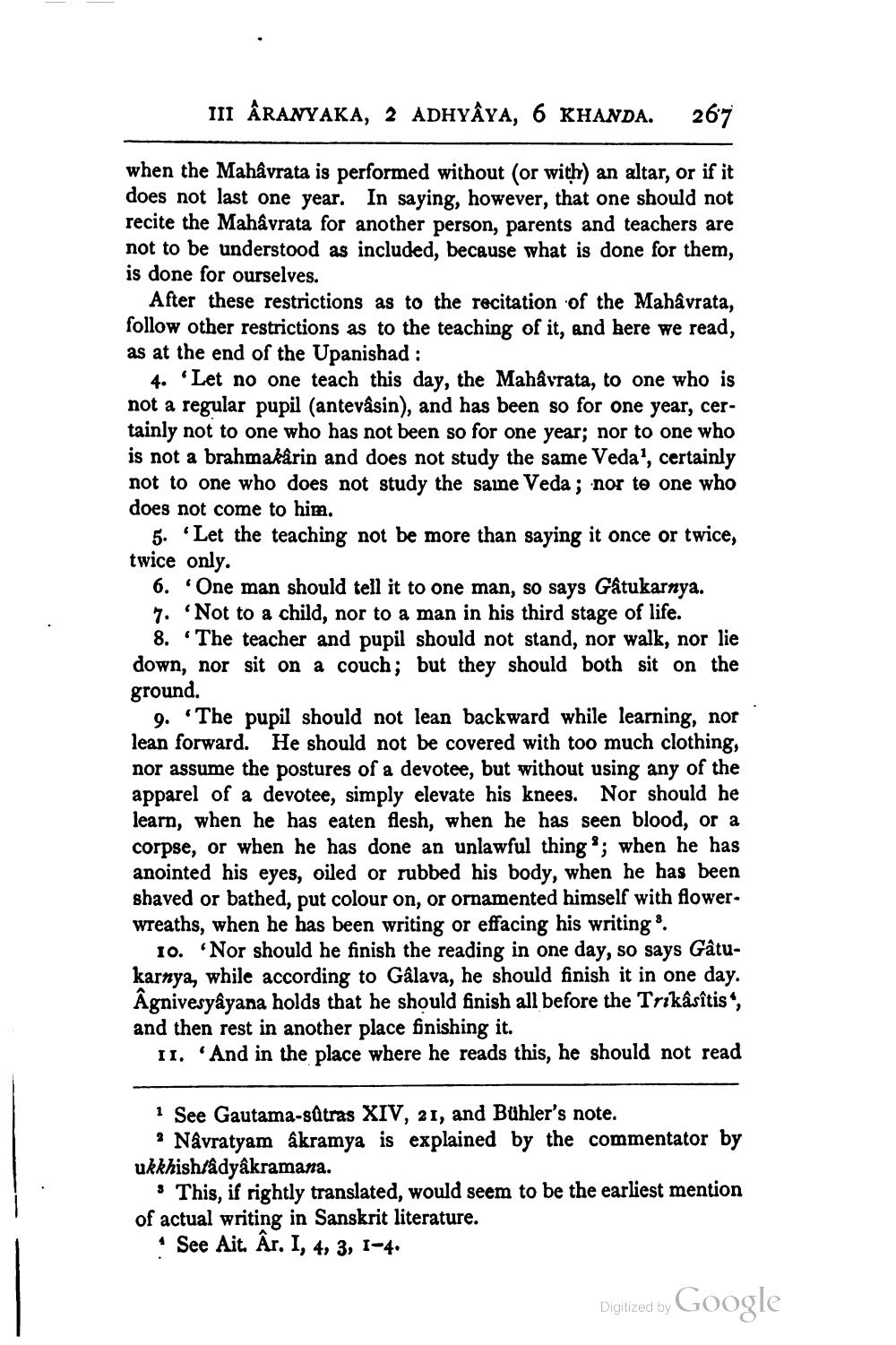________________
III ĀRANYAKA, 2 ADHYÂYA, 6 KHANDA.
267
when the Mahâvrata is performed without (or with) an altar, or if it does not last one year. In saying, however, that one should not recite the Mahâvrata for another person, parents and teachers are not to be understood as included, because what is done for them, is done for ourselves.
After these restrictions as to the recitation of the Mahâvrata, follow other restrictions as to the teaching of it, and here we read, as at the end of the Upanishad :
4. "Let no one teach this day, the Mahâvrata, to one who is not a regular pupil (antevåsin), and has been so for one year, certainly not to one who has not been so for one year; nor to one who is not a brahmakarin and does not study the same Veda', certainly not to one who does not study the same Veda; nor to one who does not come to him.
5. Let the teaching not be more than saying it once or twice, twice only.
6. One man should tell it to one man, so says Gâtukarnya. 7. Not to a child, nor to a man in his third stage of life.
8. The teacher and pupil should not stand, nor walk, nor lie down, nor sit on a couch; but they should both sit on the ground.
9. "The pupil should not lean backward while learning, nor lean forward. He should not be covered with too much clothing, nor assume the postures of a devotee, but without using any of the apparel of a devotee, simply elevate his knees. Nor should he learn, when he has eaten flesh, when he has seen blood, or a corpse, or when he has done an unlawful thing; when he has anointed his eyes, oiled or rubbed his body, when he has been shaved or bathed, put colour on, or ornamented himself with flowerwreaths, when he has been writing or effacing his writing
10. Nor should he finish the reading in one day, so says Gâtukarnya, while according to Gálava, he should finish it in one day. Agnivesyâyana holds that he should finish all before the Trikâsîtis, and then rest in another place finishing it.
11. 'And in the place where he reads this, he should not read
1 See Gautama-sūtras XIV, 21, and Bühler's note.
· Návratyam âkramya is explained by the commentator by ukkhishlådyâkramana.
8 This, if rightly translated, would seem to be the earliest mention of actual writing in Sanskrit literature.
See Ait. Ar. I, 4, 3, 1-4.
Digitized by Google




